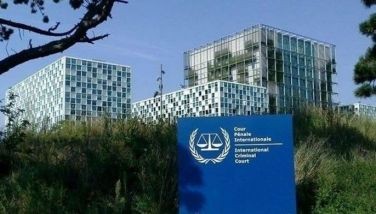Boys Town wards cry sexual, physical abuse
June 12, 2006 | 12:00am
Paul took this as an act of kindness from the official. One night, though, he was startled to find the official beside him in bed. In a Dec. 12, 2005 complaint filed with the Division of City Schools in Manila, Paul recounted that the official–who the boy said would also barge into the bathroom whenever he was taking a bath–molested him.
Paul is not the boy’s real name. The names of all the other Boys Town wards who appear later in this report have also been changed because they are minors. But those of the adults have been retained, including that of Boys Town OIC Daniel Cabangangan, who has been accused by Paul and another ward at the institution of sexual molestation.
Last December, several Boys Town wards also filed complaints of physical abuse committed by a group of male volunteers brought in by Cabangangan from Bulacan, where his family resides.
Since Cabangangan became Boys Town administrator in April 2004, the wards and some personnel of the institution have alerted authorities about the abuse that they say is taking place there. Just last March, four wards filed a complaint with the Marikina police, claiming they were beaten up by some volunteers, with full knowledge and apparently consent of Cabangangan.
Today that reputation has been marred by wards’ complaints of sexual molestation and physical abuse. Boys Town insiders themselves estimate that some 20 to 30 wards have been mauled by Cabangangan’s men between October 2004 and March 2006.
They also say at least four boys have been sexually molested by Cabangangan, usually after being asked to stay for days or even weeks in his living quarters, although only two so far have submitted written complaints to City Hall. Two more wards have filed complaints of sexual molestation against another staff member and a volunteer.
Numerous wards interviewed, including former Town residents, say it is ironic that such abuses have taken place in an institution set up precisely to care for "abandoned, orphaned, physically abused" children.
Yet save for the Parang, Marikina police, who arrested and briefly detained Cabangangan and the men allegedly involved in the March 3, 2006 beating of four boys, Manila city authorities, who have jurisdiction over Boys Town, have done little in response to the rising number of complaints.
The wards, meanwhile, say they are being bullied into silence. They say that a staff member sympathetic to them has been transferred while a volunteer close to the children has been relieved. Moreover, they accuse Boys Town management of misusing the institution’s funds and facilities.
Boys Town is supervised by the social welfare department of the government of Manila, one of the five pilot cities covered by the Fifth and Sixth Country Programs for Children of the government and the United Nations Children’s Fund (Unicef) to promote children’s rights.
Boys Town currently has 510 wards, with the Home for the Aged comprising the biggest number of residents at 236. This is followed by Boys Home, with close to 150 wards. Male and female wards are allowed to stay at the complex until they finish high school.
Boys Town wards are required to study at the Fugoso Memorial School, which offers elementary and secondary education inside the facility. After leaving Boys Town, wards are often referred to sponsors who could help them through college or get vocational training or perhaps provide them jobs.
Ronaldo, 13, says it was partly because of Boys Home OIC Leonila Borja that he and three other boys decided to withdraw the complaint they had filed with the police against Cabangangan and four of his men. The boys have a soft spot for Borja, who they describe as kind to them. According to Ronaldo, Cabangangan told them that if they went through with their complaint, "Ma’am Borja would also get in trouble. She’d be jailed, too."
"Mahal ako ng mga bata (The kids love me)," he said. "Why, they even kiss my hand." But he said an investigation committee had been formed by Manila’s social welfare department, headed by Dr. Jose L. Baranda, to look into the boys’ accusations.
Baranda has also denied there have been abuses in Boys Town, although he says the investigation is still ongoing. He says the results would be released "this year." But he hastens to add it could be "next week" or "next month."
But some Boys Town personnel and the wards’ Fugoso Memorial teachers, whose help has been sought by some of the youngsters, say their stories have remained the same in each retelling. The stories told by the wards in interviews with this reporter also matched those in the written complaints.
"When children report abuse, we believe them–and investigate all areas–legal, psychosocial-emotional issues, behavioral manifestations of the trauma," says Anita Pecson, editor of Preventing and Healing Child Sexual Abuse. "The burden is not on the children, it’s on the investigating team. Even if it is not true, it may be a way to ask for help."
It was in fact not a ward but a veteran Boys Town employee who had first submitted a complaint regarding abuses against children at the complex. The employee, who requests to remain anonymous, still remembers the exact date she saw a bunch of grim-looking children at the entrance of the main Boys Home building: Oct. 31, 2004.
The employee says that in her 24 years as houseparent, guard, and spiritual director in Boys Town, she had never seen children looking so weak and scared inside the complex.
There were at least 12 young boys, she recalls, all of them just hauled in from the streets by Manila police. Like most newly rescued street children, they had tried to escape from the Town–for which, they told the staff member, they received a severe beating from a member of the Town staff.
(To be continued)
BrandSpace Articles
<
>
- Latest
- Trending
Trending
Latest
Trending
Latest
Recommended





























